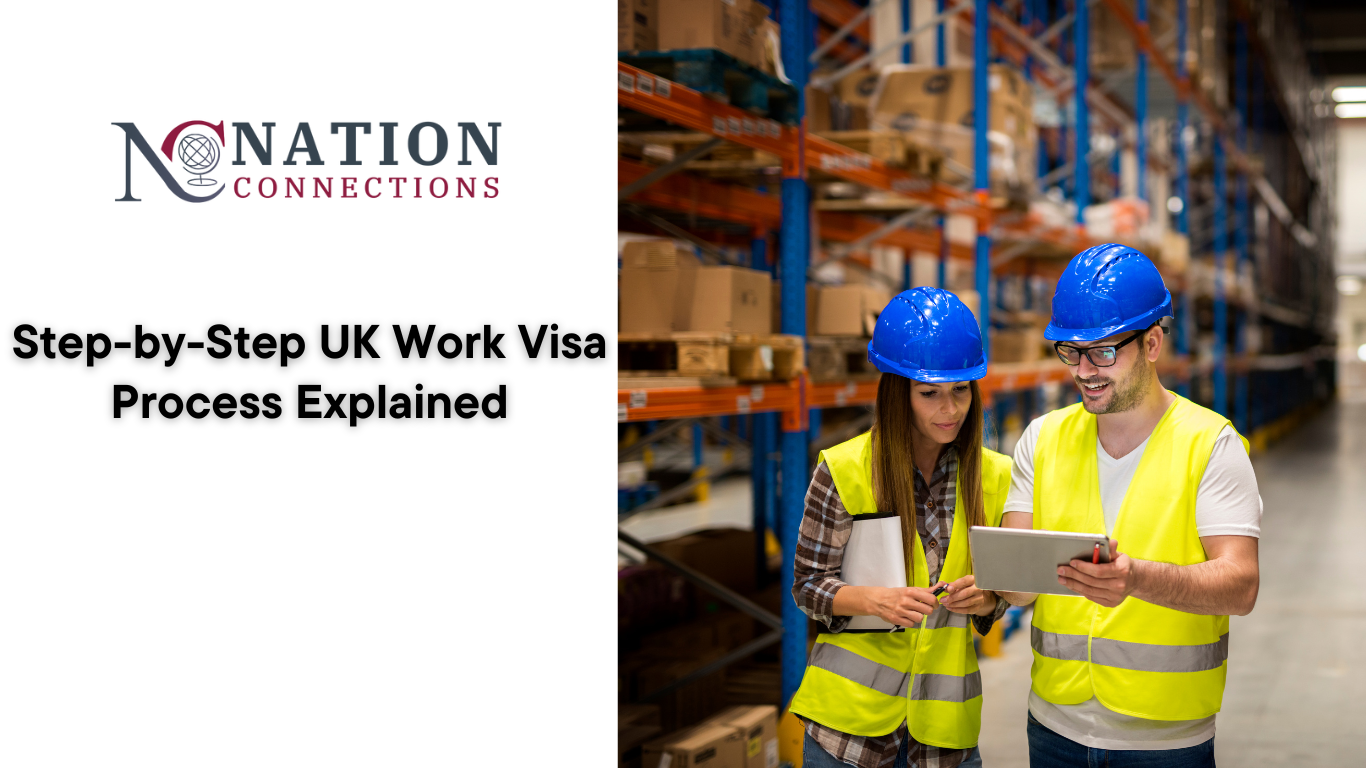The UK continues to be a top destination for skilled professionals worldwide. Whether you’re a tech expert, a healthcare worker, or a researcher, the UK offers attractive employment opportunities through its well-structured visa system. But navigating the UK Work Visa process can feel overwhelming—especially if it’s your first time. That’s why we’ve broken down the Step-by-Step UK Work Visa Process into clear, manageable stages for 2025.
This blog covers everything: eligibility criteria, types of work visas, required documents, application timelines, and common pitfalls to avoid. Ready to get started? Let’s dive in!
A UK Work Visa allows foreign nationals to live and work in the United Kingdom legally. These visas are categorized based on job type, skill level, and purpose. The most common categories include:
Skilled Worker visa (formerly Tier 2)
Global Talent visa
Health and Care Worker visa
Temporary Worker visas
Innovator and Start-Up visas
Each visa type has specific eligibility rules and documentation requirements.
If you’re not a UK or Irish citizen or don’t have settled/pre-settled status under the EU Settlement Scheme, you’ll need a visa to work in the UK.
Exceptions apply to certain diplomats, Commonwealth citizens with UK ancestry, and dependents of UK citizens or visa holders.
Let’s break down the process into simple, digestible steps.
Start by identifying which work visa suits your job and qualifications:
| Visa Type | Best For | Key Feature |
|---|---|---|
| Skilled Worker | Most professions with a job offer | Points-based |
| Global Talent | High-achievers in academia, tech, and arts | No job offer needed |
| Health & Care Worker | Healthcare professionals | Fast-track, reduced fees |
| Temporary Worker | Short-term jobs (e.g. seasonal) | Limited stay |
| Start-up/Innovator | Entrepreneurs | Need endorsement |
To apply for most UK work visas, you must have a job offer from an employer licensed by the UK Home Office. They will issue you a Certificate of Sponsorship (CoS), which is essential for the visa application.
You can find licensed sponsors via the official UK sponsor list.
Eligibility varies by visa type but generally includes:
A valid Certificate of Sponsorship (CoS)
Proof of English language proficiency
Minimum salary threshold
Criminal background check (certain jobs)
Tuberculosis test results (from listed countries)
You’ll typically need:
Certificate of Sponsorship (reference number)
Valid passport
Proof of English language skills (e.g., IELTS)
Bank statements (if proof of funds required)
TB test results (if applicable)
Job offer letter
Always ensure documents are translated into English if not originally in the language.
Applications are submitted through the official UK Visas and Immigration website. You’ll need to:
Fill out the form
Pay the visa application fee
Pay the Immigration Health Surcharge (IHS)
After submission, you’ll schedule an appointment at a local visa application center (VAC) to provide fingerprints and a photo. Some applicants may qualify for the UK Immigration: ID Check app instead.
Processing times typically range from:
3 weeks (outside the UK)
8 weeks (inside the UK)
You can pay for priority processing to receive a decision faster.
Once approved, you’ll receive:
A vignette sticker in your passport (valid 30 days)
A decision letter
After arriving in the UK, collect your Biometric Residence Permit (BRP) within 10 days.
| Visa Type | Application Fee | Immigration Health Surcharge |
|---|---|---|
| Skilled Worker | £719–£1,500 | £624 per year |
| Global Talent | £623 | £624 per year |
| Health & Care Worker | £247–£479 | £0 (exempt) |
Fees may vary depending on job shortage list and visa length.
Applying for the wrong visa type
Missing document translations
Underestimating IHS and other costs
Submitting incomplete applications
Ignoring the visa expiry date
Yes! Many temporary and student visas can be switched to work visas from inside the UK, provided you meet the criteria.
Skilled Worker and other long-term visa holders can bring dependents (spouse and children). Each family member must apply separately and pay visa fees and IHS.
Most UK work visas can be extended, and after five years, you may be eligible for Indefinite Leave to Remain (ILR), leading to permanent residency.
Standard: 3 weeks (outside UK)
Priority: 5 working days
Super Priority: Next working day
You can:
Request an administrative review
Reapply with corrected documents
Appeal (in limited cases)
Seek professional legal advice if refused.
The Step-by-Step UK Work Visa Process Explained is your roadmap to beginning a new professional journey in the United Kingdom. Whether you’re applying from abroad or switching your visa within the UK, following these steps can help ensure a smooth and successful process.
How long does a UK Work Visa last?
Typically 3–5 years, depending on the visa type and job contract.
Can I work part-time on a UK Skilled Worker visa?
Only under specific conditions and usually with a secondary employer also licensed.
Is the IELTS required for all work visas?
Most require English proficiency, and IELTS is the common test, though alternatives exist.
Can I apply without a job offer?
Only under certain visa types like the Global Talent or Graduate visa.
Can a UK Work Visa be extended?
Yes, most can be extended before expiry if eligibility criteria continue to be met.
Do I need to show proof of funds?
Yes, unless your employer covers your costs or you’re exempt.
Conclusion
Applying for a UK work visa may seem complex, but with the right preparation, it becomes entirely manageable. From selecting the right visa to collecting your BRP in the UK, each step builds toward your new career opportunity abroad. With this Step-by-Step UK Work Visa Process Explained, you’re now empowered with the knowledge to make the right choices. Good luck!




